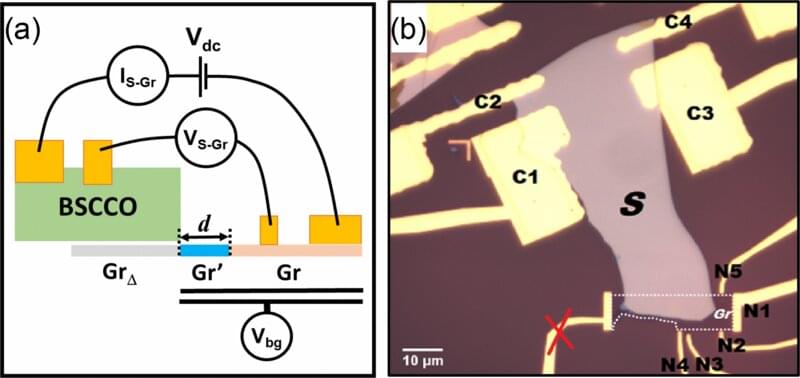Developing new quantum devices relies on controlling how electrons behave. A material called graphene, a single layer of carbon atoms, has fascinated researchers in recent years because its electrons behave as if they have no mass. For decades, scientists have also been interested in high-temperature superconductors: ceramic materials where electron interactions yield a macroscopic quantum state where electrons pair with each other. They do so at a temperature above the usual superconducting temperature of metals, which approaches absolute zero.
In a recent study published in Physical Review Letters, researchers from the SUNY Polytechnic Institute, Stony Brook University and the Brookhaven National Laboratory in the US, along with Aalto University in Finland, demonstrated a new electronic device that employs the unique ways in which electrons behave in these two materials— graphene and high-temperature superconductors.
The experiment, led by Sharadh Jois and Ji Ung Lee from SUNY with the support of theoretical work done by Jose Lado, assistant professor at Aalto, demonstrated a new quantum device that combines both graphene and an unconventional high-temperature superconductor.
